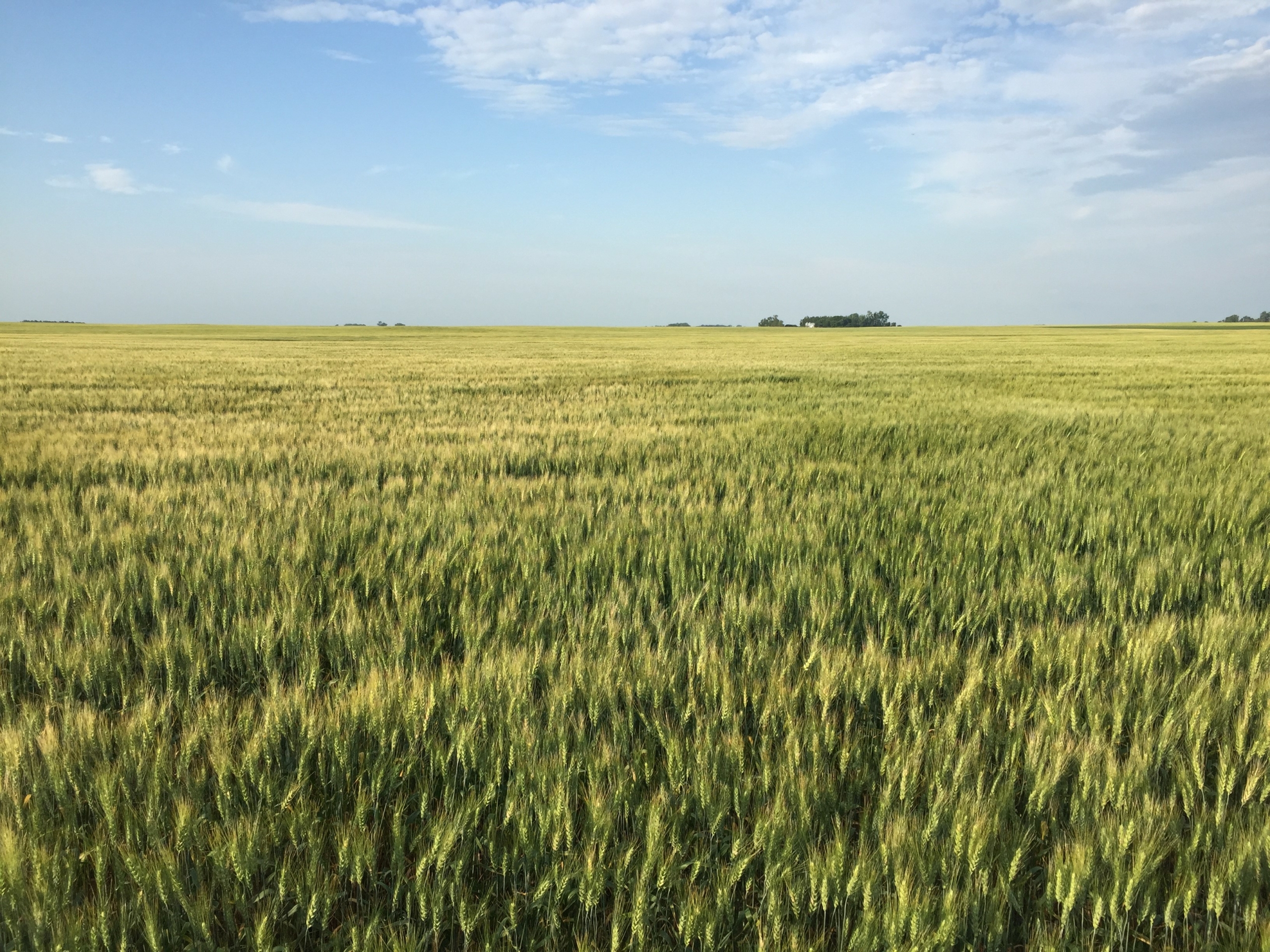Unfavorable Weather Delays U.S. Spring Wheat Harvest
By Claire Hutchins, USW Market Analyst
Though early April is the ideal planting window for U. S. hard red spring (HRS) wheat, saturated fields and cold soil temperatures kept many farmers out of their fields until late May or early June this year. The same precipitation and cool temperatures that delayed planting boosted early HRS development through mid-June and helped reduce concerns about late planting from central Montana to western Minnesota. Now, scattered precipitation and high humidity across the Northern Plains are preventing many farmers from entering their fields to begin the spring wheat harvest. According to USDA’s August 19 Crop Progress report, only 16% of the country’s spring wheat harvest was complete compared to last year’s 56% and the 5-year average of 49%. In spite of the delay, USDA rates 70% of U.S. spring wheat in good to excellent condition and an average yield of 49.2 bu/acre (3.30 MT/hectare), up from last year’s 48.3 bu/acre (3.25 MT/hectare). USDA predicts the country will produce 597 million bushels (16.2 million metric tons (MMT)) of HRS in 2019.
USW gathered some additional information from our stakeholders in HRS production states.
Minnesota. “It’s been a good year for wheat. The crop looks great and we expect above average yields and average protein levels despite delays,” says Charlie Vogel, Executive Director of the Minnesota Wheat Research & Promotion Council. Farmers in Minnesota, the second largest HRS-producing state in the country, are expected to harvest 91.7 million bushels (2.5 MMT) of wheat in 2019, down slightly from 2018 levels as reduced planted area offset increased expected yields. According to Vogel, Minnesota farmers have barely begun the spring wheat harvest due to scattered precipitation throughout the state. In an average year, farmers would be about 88% complete by now compared to the 14% reported by USDA. In the west, farmers are swathing their wheat in windrows to dry it out before combining. With a cool, dry weather forecast for the next 10 days, Vogel expects Minnesota’s harvest to progress nearly to completion by next week if dry conditions hold.
In Montana, the third largest HRS-producing state in the country, cold and wet soil conditions widened the spring planting window from mid-April to early June. A dry July helped farmers who were able to get their HRS in the ground early, but could hurt yields for late-planted HRS. The Montana spring wheat harvest has been “slow and frustrating” according to Cassidy Marn, Marketing Program Manager at the Montana Wheat & Barley Committee, as rainy, cold weather poured over the southern two thirds of the state around August 10. Marn believes these conditions have delayed the HRS harvest by about 3 days on average and by as much as two to three weeks in some places. Montana’s spring wheat harvest, at 20% complete, is far behind last year’s pace of 42% and the five-year average of 44%. When Montana’s farmers do complete harvest, they are expected to see an average 34.0 bu/acre (2.28 MT/hectare) in 2019, 2.0 bu/acre higher than last year’s yield, according to USDA. Montana’s HRS crop is expected to total 85.0 million bushels (2.31 MMT) this year, down 11% from last year as reduced planted area more than offsets increased expected yields.
North Dakota. “Spring wheat harvest had a sluggish start, but is beginning to accelerate. It is an above-average crop and we are waiting to see how rains impact harvest pace,” says Jim Peterson, Policy and Marketing Director at the North Dakota Wheat Commission. North Dakota is the largest HRS-producing state in the country and is expected to produce 320 million bushels (8.70 MMT) in 2019. Cool, wet weather delayed spring wheat planting but boosted yield potential in the central and southern part of the state. In north-central North Dakota, HRS yields could be lower than USDA’s predicted 50.0 bu/acre (1.36 MT/hectare) due to unusually dry conditions that affected the crop throughout the summer. As of August 18, only 12% of the state’s HRS was harvested compared to 55% last year and the 5-year average of 43%. Peterson predicts the state’s HRS harvest could take off in the next couple of days if a pocket of cool, dry weather rolls through the state.
South Dakota. According to Reid Christopherson, Executive Director of the South Dakota Wheat Commission, “HRS harvest is extremely delayed. Unfortunately, the crop is ready to harvest; however, moisture and mud in the fields have stalled progress. Extreme humidity and frequent rains have allowed only a few hours of harvest per day when field conditions permit access.” Only 27% of the state’s HRS harvest is complete compared to last year’s 89% and the 5-year average of 75%. Based on early harvest data, South Dakota HRS test weights and protein levels look good, but continued moisture throughout the harvest could reduce kernel color. USDA expects South Dakota HRS yields to increase 12% over last year to 42.0 bu/acre (2.82 MT/hectare), but production is expected to fall 10% year-over-year as reduced planted area offsets increased expected yields.


